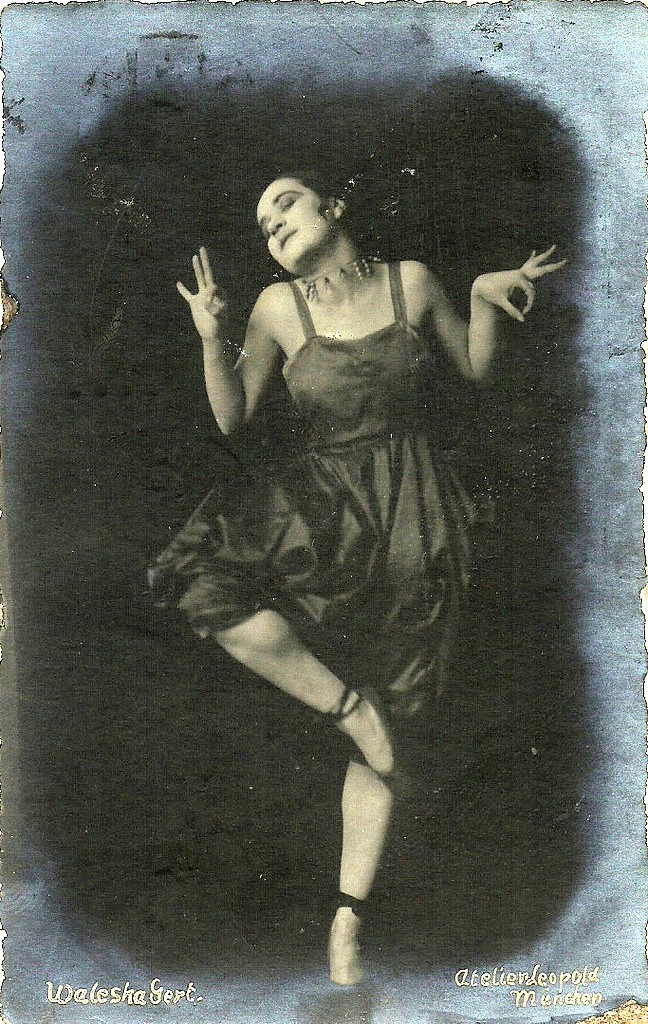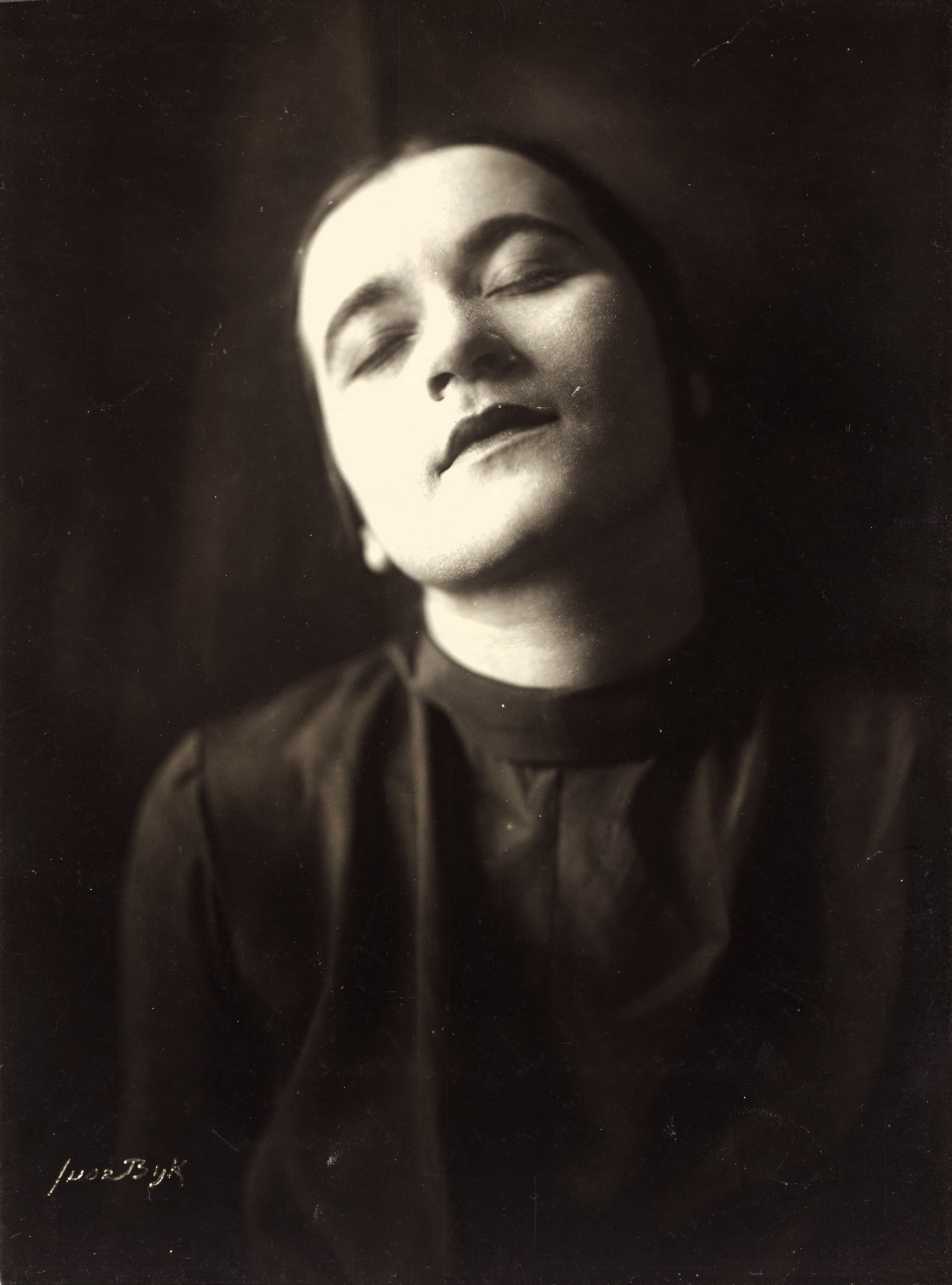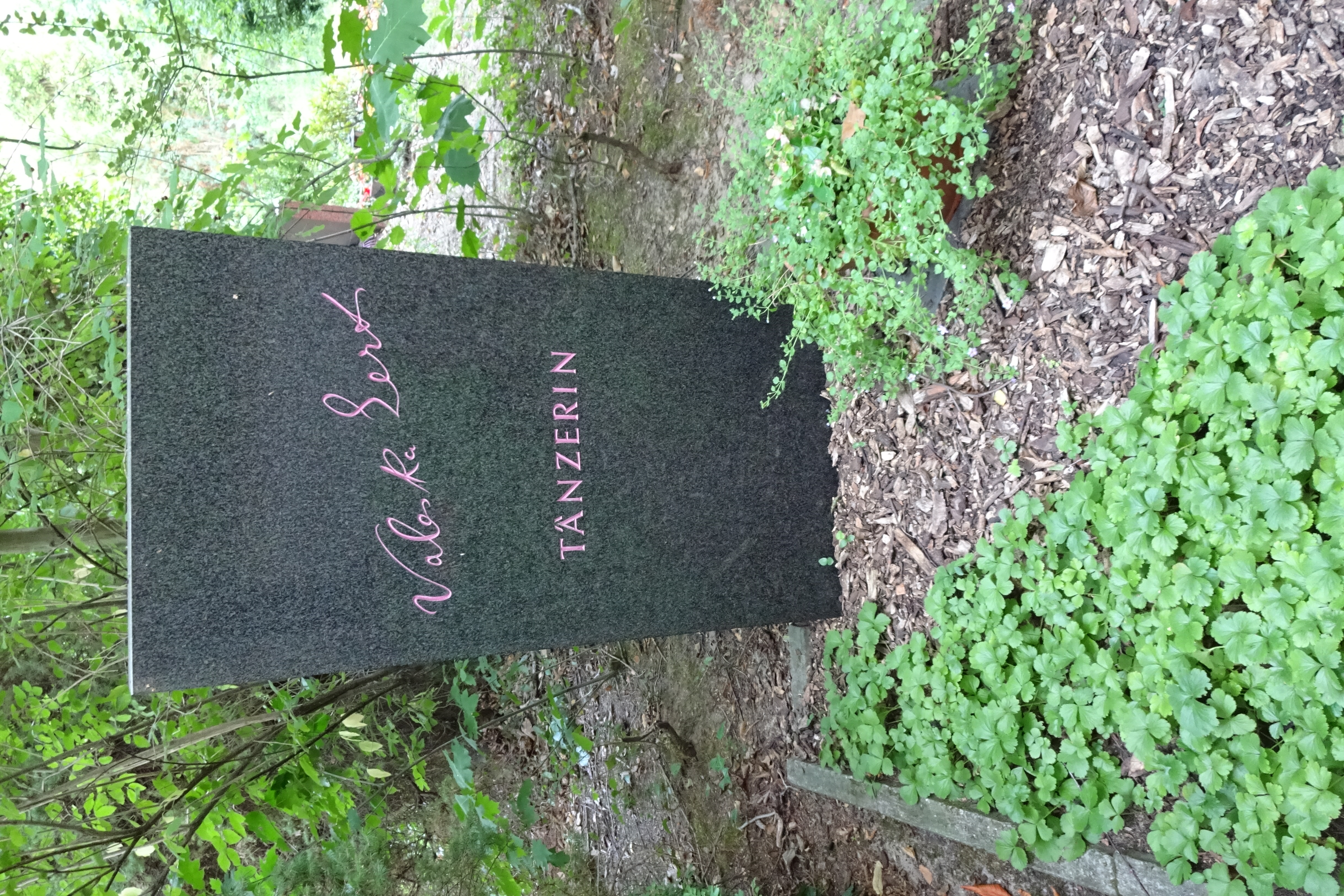1. Overview
Valeska Gert (1892-1978) was a pioneering German dancer, pantomime, cabaret artist, actress, and performance artist whose innovative and often provocative work challenged artistic and societal conventions. Born into a Jewish family, her career spanned the vibrant Weimar Republic, a period of forced exile due to Nazi persecution, and a significant comeback in her later years. Gert is celebrated for her radical approach to performance, blending dance, acting, and grotesque elements to create a unique form of expressionism that deeply influenced the development of performance art and cabaret. Her life reflects the struggles of artists facing political oppression, highlighting her resilience and unwavering commitment to her artistic vision despite persecution.
2. Early Life and Background
Valeska Gert's early life in Berlin was marked by a burgeoning artistic inclination and the financial shifts brought about by World War I, which propelled her towards greater independence and a career in performance.
2.1. Birth and Family Origins
Valeska Gert was born as Gertrud Valesca Samosch on January 11, 1892, in Berlin, German Empire. She was the eldest daughter of Theodor Samosch, a manufacturer, and Augusta Rosenthal, both of Jewish heritage.
2.2. Education and Early Artistic Pursuits
From a young age, Gert showed little interest in traditional academics or office work. Instead, she began taking dance lessons at the age of nine, developing a passion for movement and performance. Her early artistic pursuits also included a strong affinity for ornate fashion, which she later integrated into her distinctive performance style. In 1915, she furthered her studies, taking acting lessons with Maria Moissi and dance instruction from Rita Sacchetto.
2.3. Impact of World War I
The outbreak of World War I had a significant impact on her family's finances, particularly affecting her father's manufacturing business. This financial strain compelled Gert to become more self-reliant than was typical for bourgeois daughters of her time. As the war continued, she joined a dance group in Berlin and began to create revolutionary satirical dances, marking her early foray into politically charged performance. Her first solo dance, titled "Dance in Orange," premiered in early 1916 as part of a program by her dance teacher, Rita Sacchetto, at the Blüthnersaal in Berlin. The following week, she performed it at the UFA movie palace at Nollendorfplatz in Berlin, presented between two films.
3. Artistic Development and Early Career
Gert's early career during the Weimar Republic was characterized by her groundbreaking and often confrontational artistic style, which pushed the boundaries of traditional dance, theatre, and cabaret.

3.1. Revolutionary Dance and Expressionist Theatre
Following engagements at the Deutsches Theater (Berlin) and the Tribüne in Berlin, Valeska Gert was invited to perform in expressionist plays and Dadaist mixed-media art nights. Her performances in Oskar Kokoschka's 1918 play Hiob, Ernst Toller's 1919 work Transformation, and Frank Wedekind's 1921 play Franziska garnered her significant recognition. Gert's performances were noted for their anarchic intensity and artistic fearlessness, qualities that resonated strongly with the Dadaist movement. She could embody a range of emotions and states, shifting between grotesque, intense, mocking, pathetic, and furious expressions. She meticulously analyzed the constraints of societal conventions and then used her body to express the profound insights she gained from these analyses.
3.2. Provocative Performances and Cabaret
In the 1920s, Gert premiered some of her most provocative and radical works. Her iconic piece, Canaille (meaning a prostitute), caused a sensation in Berlin in 1922, with the audience reportedly calling the police during her performance, which included an orgasm. Her other progressive performances during this decade depicted subjects such as a traffic accident, boxing, or dying. These performances were revolutionary and consistently shocked and fascinated her audiences. During this period, she was a prominent performer at the Schall und Rauch cabaret. Gert also embarked on a tour of her own solo dances, featuring titles like "Dance in Orange," "Boxing," "Circus," "Japanese Grotesque," "Death," and "Canaille." From 1926 onwards, she introduced new solo pieces she called `TontänzeSound DancesGerman`, integrating her voice-through noises and words-with her movements, gestures, and facial expressions. Beyond her stage work, Gert also contributed articles to prominent magazines such as Die Weltbühne (The World Stage) and the Berliner Tageszeitung (Berlin Daily News).

3.3. Early Film Appearances
By 1923, Valeska Gert began to shift part of her focus to film acting, collaborating with actors such as Andrews Engelmann and Arnold Korff. She appeared in several significant silent films, including Georg Wilhelm Pabst's 1925 drama Joyless Street, where she played Frau Greifer. Other notable silent film roles include Colomba (1918), Wood Love (1925) as Puck, Jean Renoir's 1926 adaptation of Nana as Zoe, and Alraune (1928) as a street girl. She also featured in the experimental film Der Tod (1929), which was part of Bertolt Brecht's The Baden-Baden Lesson on Consent. Her collaboration with G.W. Pabst continued with the 1929 film Diary of a Lost Girl, where she played the director's wife, and the 1931 early sound film The Threepenny Opera, in which she portrayed Mrs. Peachum. Other early sound film appearances include Such Is Life (1930) as a waitress and People on Sunday (1930) as herself.
4. Exile and International Career
Valeska Gert's career was profoundly impacted by the rise of Nazism in Germany, forcing her into exile and leading her to establish new artistic ventures in London and the United States before her eventual return to Europe.
4.1. Persecution and Exile from Germany
In 1933, due to her Jewish heritage, Valeska Gert was officially banned from performing on the German stage by the Nazi regime. This act of persecution forced her to emigrate from Germany, marking a significant turning point in her life and career.
4.2. London
Following her exile from Germany, Gert initially moved to London, where she continued her artistic work in both theatre and film. During her time in London, she worked on the experimental short film Pett and Pott (1934), which for a long time remained her last movie appearance. While in London, she married Robin Hay Anderson, an English writer, which was her second marriage. She also had an uncredited role in the 1939 British film Rio.
4.3. United States
In early 1939, Valeska Gert emigrated to the United States, where she found support within the Jewish refugee community. That same year, she hired the then 17-year-old Georg Kreisler as a rehearsal pianist, continuing her focus on cabaret work. In the summer of 1940, she found employment posing as a nude model for an artist in Provincetown, Massachusetts. By the end of 1941, Gert had established her own cabaret and restaurant, the Beggar's Bar, in New York City. This establishment was uniquely furnished with mismatched furniture and lamps, creating a distinctive atmosphere. Notable artists who worked for her at the Beggar's Bar included Julian Beck, Judith Malina, and Jackson Pollock. Even Tennessee Williams worked there briefly as a busboy, though he was fired for refusing to pool his tips, with Gert reportedly commenting that his work was "so sloppy." Despite its success, Gert was forced to close the Beggar's Bar in February 1945 due to a lack of official permits.
Gert continued to spend every summer in Provincetown until 1946, when she opened her new cabaret, Valeska's, in the town. During this period, she reunited with Tennessee Williams, sharing anecdotes from her time at the Beggar's Bar, including stories about hiring a 70-year-old midget named Mademoiselle Pumpernickel who would become jealous when Gert performed on stage. In the summer of 1946, while running Valeska's, Gert was called to Provincetown court for throwing garbage out of her window and failing to pay a dance partner. She requested Williams to serve as a character witness, which he gladly did, despite having been fired by her. Williams later told incredulous friends that he "simply liked her."
4.4. Return to Europe
In 1947, Valeska Gert returned to Europe. After temporary stays in Paris and Zürich, where she managed a cabaret café called `Valeska und ihr KüchenpersonalValeska and her kitchen staffGerman` for half a year in 1948, she moved back to Blockaded Berlin. There, she first opened the cabaret `Bei ValeskaAt Valeska'sGerman` in the former `OpernkellerOpera cellarGerman` at the Theater des Westens from 1949 to 1950. Subsequently, she opened the cabaret `HexenkücheWitch's KitchenGerman` in 1950, which operated every winter until April 1956. During the same period, in the summer of 1951, she established her cabaret `ZiegenstallGoat ShedGerman` in the village of Kampen on the island of Sylt. She continued to run this small but well-known cabaret every summer until her death.
5. Later Career and Recognition
Valeska Gert experienced a significant resurgence in her film and performance career in her later years, leading to increased recognition for her pioneering contributions to the arts.
5.1. Film Comeback and Later Works
In the 1960s, Valeska Gert made a notable comeback in film. In 1965, she appeared in Federico Fellini's acclaimed film Juliet of the Spirits as Pijma. The success of this role prompted her to actively market herself to young German directors in the 1970s. During this period, she took on roles in significant works by emerging filmmakers, including Rainer Werner Fassbinder's television series Eight Hours Don't Make a Day (1973), where she played "Die andere Oma" (the other grandma), and Volker Schlöndorff's 1976 film Coup de Grâce, in which she portrayed Tante Praskovia, marking her final film role. Other later film appearances include La Bonne dame (1966) and Die Betörung der blauen Matrosen (1975). In 1977, Volker Schlöndorff also directed a documentary about her, Nur zum Spaß, nur zum Spiel - Kaleidoskop Valeska Gert. In 1978, renowned director Werner Herzog invited her to play the character of the real estate broker Knock in his remake of F. W. Murnau's classic film Nosferatu. The contract was signed on March 1, but Gert tragically died just two weeks later, before filming could commence.
5.2. Cultural Reappraisal and Exhibitions
Valeska Gert's artistic contributions have received significant posthumous recognition and reappraisal. In 2010, her art was featured at the Hamburger Bahnhof - Museum for Contemporary Art in Berlin, as part of the exhibition `Pause. Bewegte FragmentePause. Fragments in motionGerman`. The exhibition, curated by Wolfgang Müller of the art punk band `Die Tödliche DorisThe Deadly DorisGerman` and art historian An Paenhuysen, included a video titled Baby, which showed Gert performing. This video was recorded by Ernst Mitzka in 1969. Mitzka's video of Gert performing both Baby and Death is also part of the video art collection Record Again! 40 Jahre Videokunst.de part 2, which was exhibited at the Edith Russ Haus für Medienkunst in Oldenburg in 2010.
6. Personal Life
Valeska Gert's personal life included significant relationships that shaped her experiences.
6.1. Key Relationships
In 1923, Valeska Gert met Aribert Wäscher, with whom she maintained a relationship until 1938. Later, during her time in London, she entered into her second marriage with the English writer Robin Hay Anderson.
7. Death
Valeska Gert's life concluded in her beloved Kampen, Sylt, where she had established her summer cabaret.
7.1. Final Days and Passing
Valeska Gert is believed to have died around March 16, 1978, at the age of 86, in Kampen, Germany. On March 18, 1978, neighbors and friends in Kampen reported that she had not been seen for four days. Her door was subsequently forced open in the presence of the police, and she was found deceased.

8. Legacy and Influence
Valeska Gert's distinctive and radical artistic approach left a lasting impact on the arts, securing her place as a significant figure in 20th-century performance.
8.1. Artistic Impact and Innovations
Valeska Gert is recognized as a pioneering figure in performance art, modern dance, and cabaret. Her innovative use of the body to express profound social and psychological insights, often through grotesque and satirical portrayals, predated many later developments in performance art. Her unique style, which combined movement, voice, and facial expressions, greatly influenced subsequent generations of artists who sought to break traditional boundaries in performance. Her ability to simultaneously shock and fascinate audiences, as seen in works like "Canaille" and "Sound Dances," cemented her reputation as a fearless and revolutionary artist.
8.2. Academic and Critical Reception
Valeska Gert's work has been the subject of extensive academic and critical study, reflecting her importance in the history of modern art and performance. Early contemporaries, such as Paul Nikolaus, Ernst Blass, and Werner Suhr, recognized her bold and new style of dance. More recent scholarly analyses, including documentary biographies by Frank-Manuel Peter and studies by Susanne Foellmer, have explored her role as an avant-gardist in 1920s dance and theatre. Academic treatments by scholars like Gabriele Brandstetter, Dianne S. Howe, Ramsay Burt, and Christiane Kuhlmann have examined her body images, the aesthetics of New German Dance, representations of modernity, and the interplay between dance and photography. Her performances within the context of Weimar culture have been analyzed by Alexandra Kolb, while Kristen Hylenski has explored Gert's autobiographical legacy and her performances of the self. Wolfgang Müller, founder of the West Berlin performance group Die Tödliche Doris, has also written about the connections between Gert's proto-punk performances and the post-punk scene, highlighting her enduring relevance.
8.3. Awards and Honors
Valeska Gert received significant accolades for her lifelong contributions to German cinema and cabaret. In 1970, she was awarded the Filmband in Gold for her lifetime achievement in German film. Posthumously, in 2004, she was honored with a star on the Walk of Fame of Cabaret in Mainz, Germany, further cementing her legacy in the performing arts.